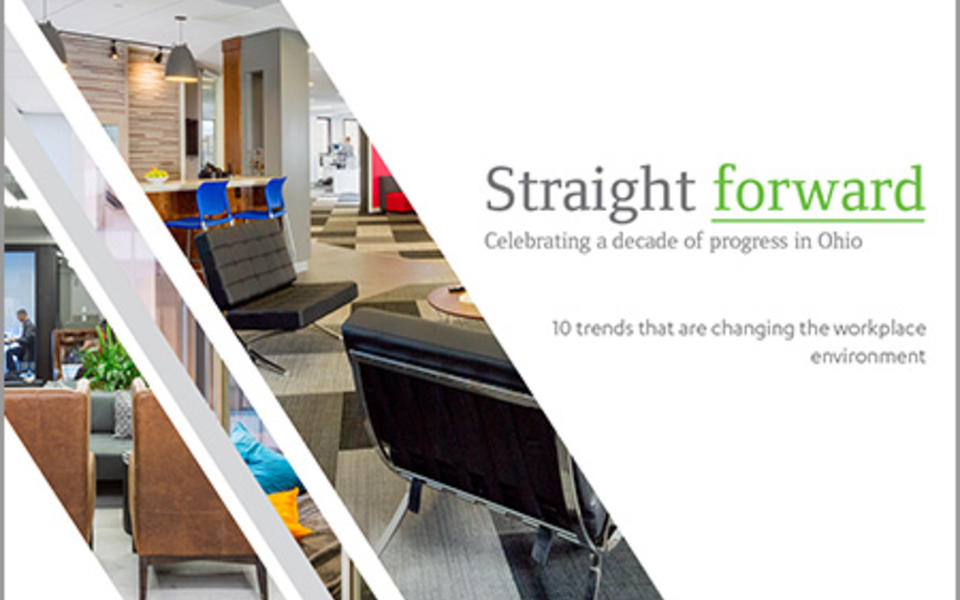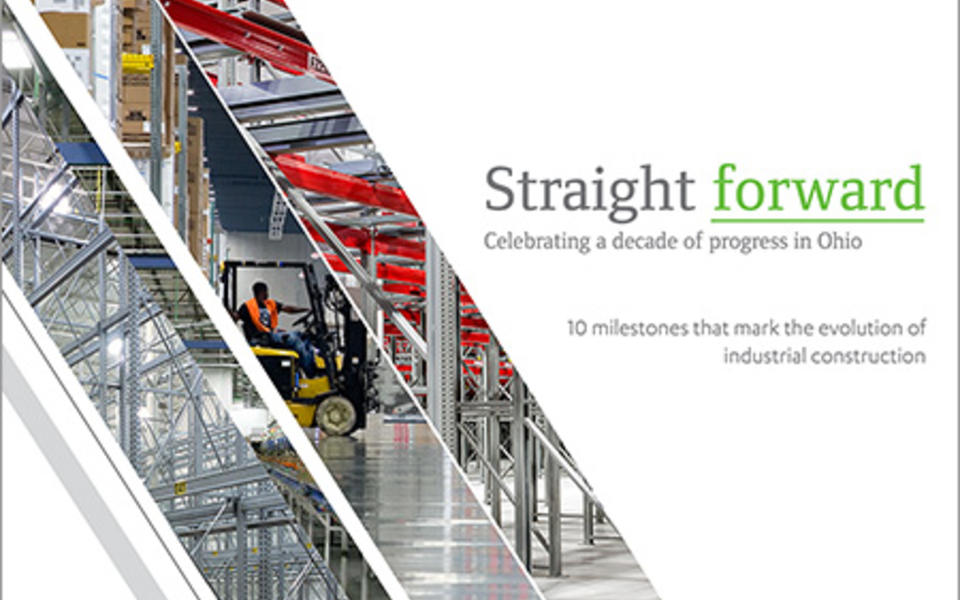Ohio 10th anniversary
In today’s world, technology is a part of everything we do. It is improving construction processes, software, equipment, and materials across the world. Below are 10 new technologies that will change the way we build in the next decade.
01. Mobile devices & applications – Project teams are more connected than ever with applications that allow teams to track the project in real time, which improves communication, efficiency, and safety on the jobsite. Further developments in mobile applications and enhanced connectivity will be key for the construction industry in the next decade.
02. Construction collaboration software/apps –Construction collaboration software/apps did away with the gap between field and office by bringing technology to the forefront of field operations. The software allows field staff to reference Requests for Information (RFIs), add markups and view plans where the work is being performed.
03. Virtual design & construction – Virtual design and construction was developed decades ago; however, it’s popularity in the contracting world caught fire around 2012. The future of virtual design and construction will be defined by how it is used by the owner for facility management.
04. Prefabrication/pre-assembly – Pre-fabrication allows building components to be constructed or pre-assembled before arriving at the jobsite. It has the potential to speed up a schedule, provide cost saving benefits and improve the safety and quality of installations.
05. Internet of Things – The Internet of Things (IoT) has a place in every facet of business, including construction. With the capability of linking the internet to essentially any operating system, it allows for real-time monitoring of live business activities across the world. For the construction industry, this means automatic supply replenishment on-site, equipment and tool tracking, logging hours automatically through equipment usage, power usage monitoring and more.
06. 3D printing – The concept of 3D printing has been around for some time now; however, in the past couple of years the application has gone from small components to entire homes! The process has proven to significantly lower both material and labor cost when building a structure.
07. Construction materials – The technological advancements of construction materials have greatly improved the way we build in recent years and will continue to be a significant influencer in construction in the next decade. Some of these advancements include carbon nanotubes, which improve strength in basic construction materials such as cement; transparent aluminum, which is used as a stronger alternative to glass; aerogel insulation, a synthetic, light material used in lieu of traditional insulation; and self-healing concrete.
08. Wearables – Virtual reality glasses are being used in the design phase of a project to allow companies to take a virtual tour of their project before the team ever breaks ground. This same technology is making its way to the field. Imagine a virtual reality hard hat that makes plans viewable on a jobsite or shares real time progress with an off-site owner. The Smart Helmet does both and more. Or safety vests with tracking and communication systems built- in, or “exosuits” that have a lightweight harness with robotic capabilities.
09. UAVs (Unmanned Aerial Vehicles) – With the recent spike in demand and favorable change in regulations, drones are becoming a much more affordable tool to employ on a jobsite. The technology has many benefits for a construction site, such as aerial photography, tracking job progress, inspecting hard to reach places, productivity, and creating topographical maps.
10. Robots – Robots have been used in the construction industry for quite some time for demolition purposes; however, it is not until recently that robots have been introduced to the building stage. Wearables can be used to enhance a human’s capabilities, but what about robots that work autonomously? These robotics could significantly increase productivity, efficiency, safety and quality over the next decade, and they are currently being experimented on jobsites across the world.
About the Author





